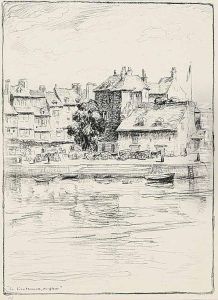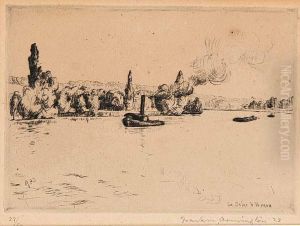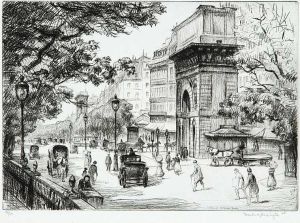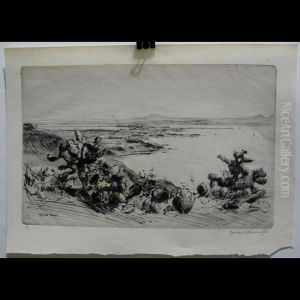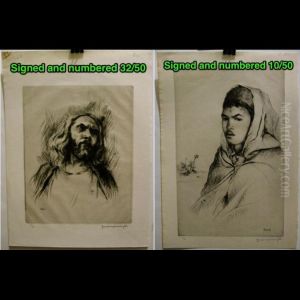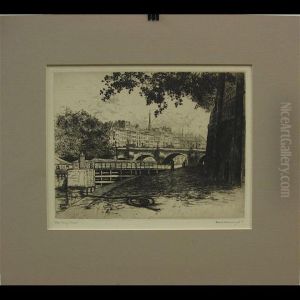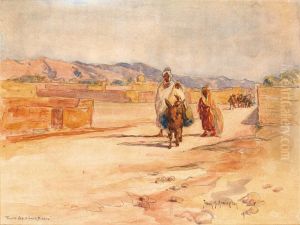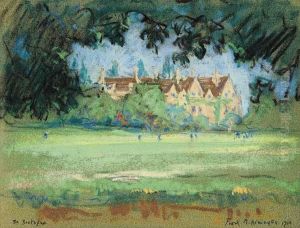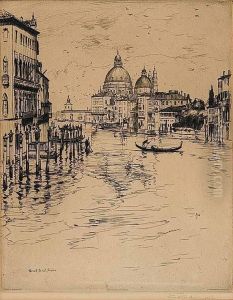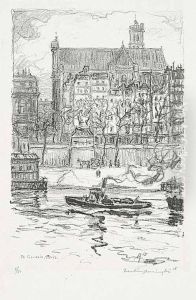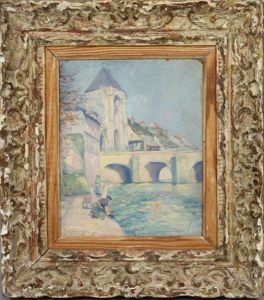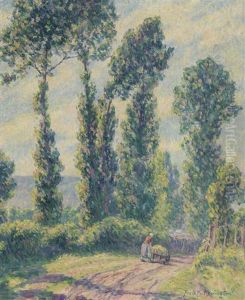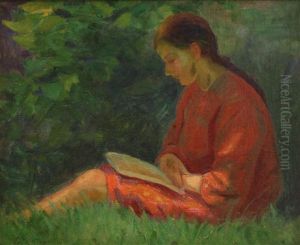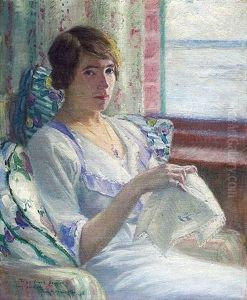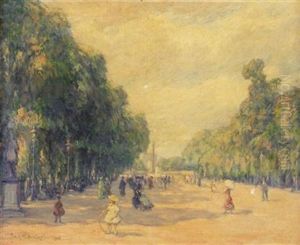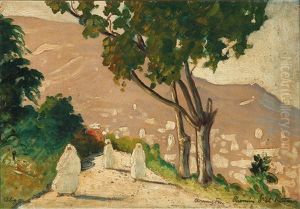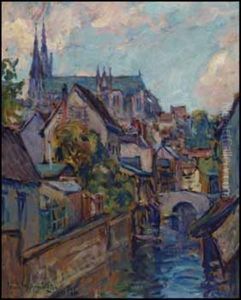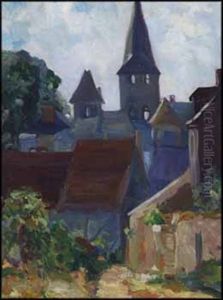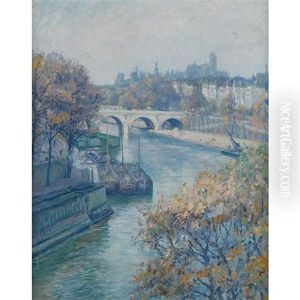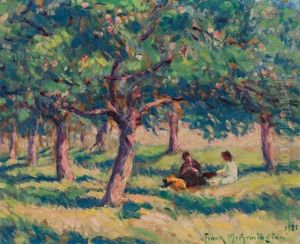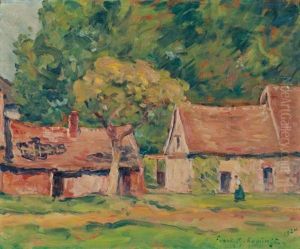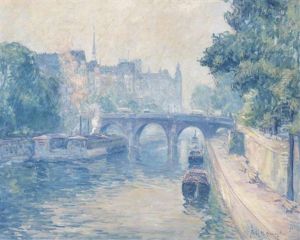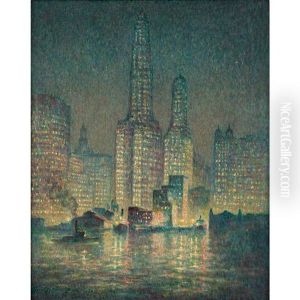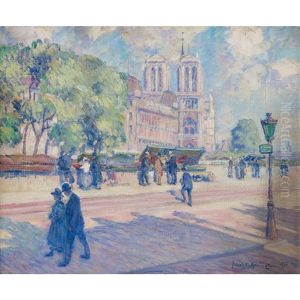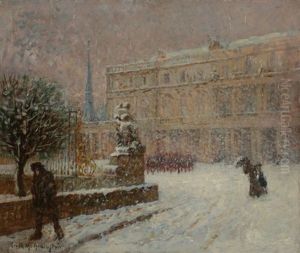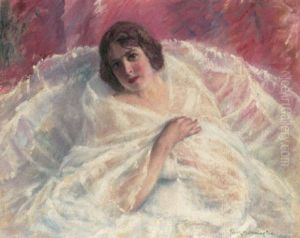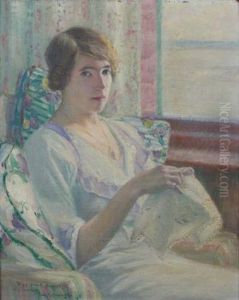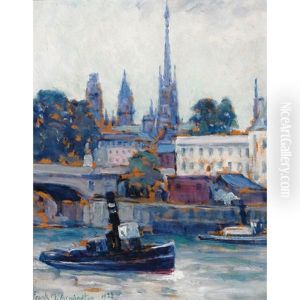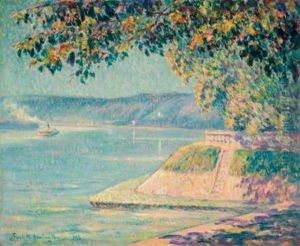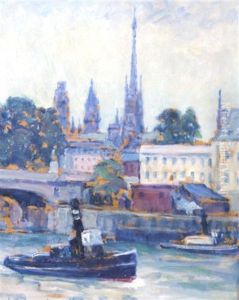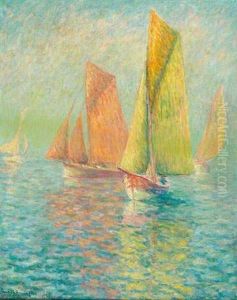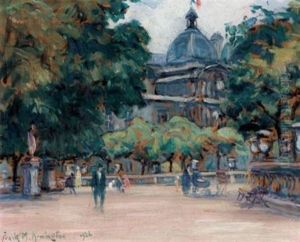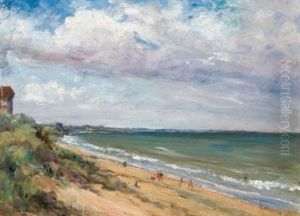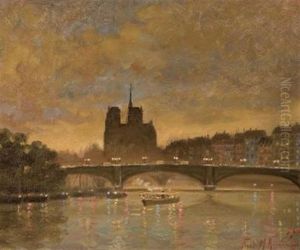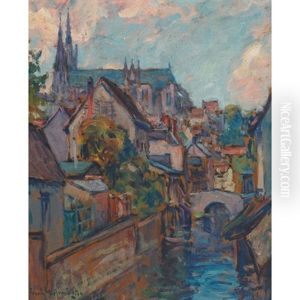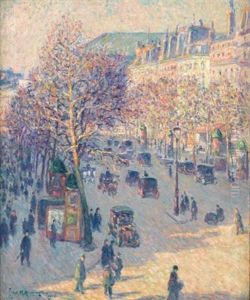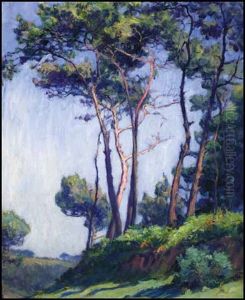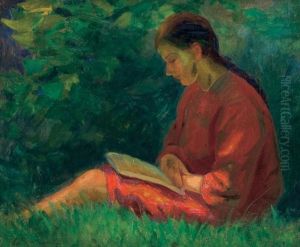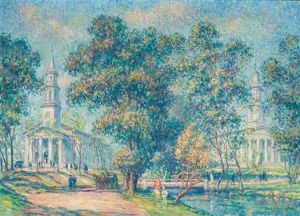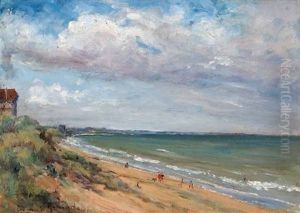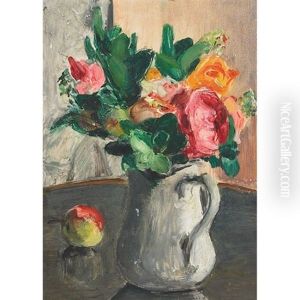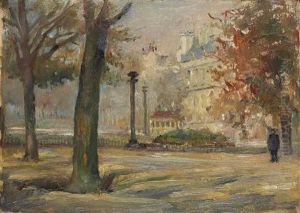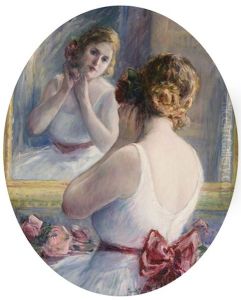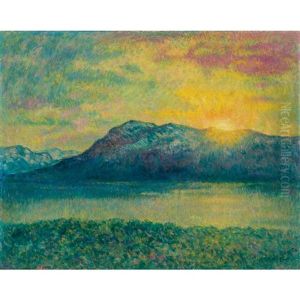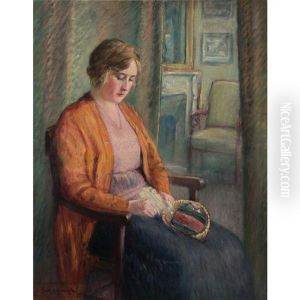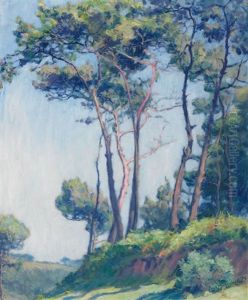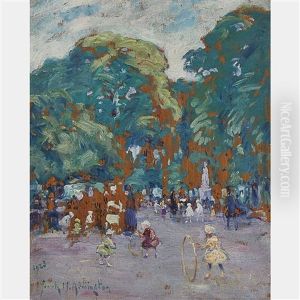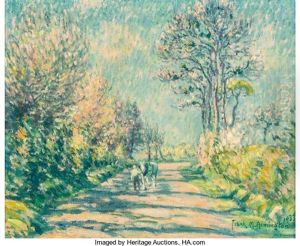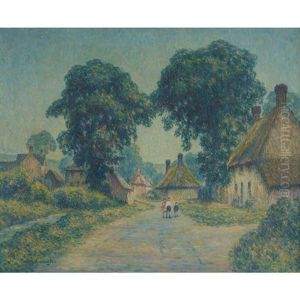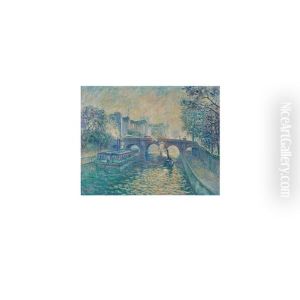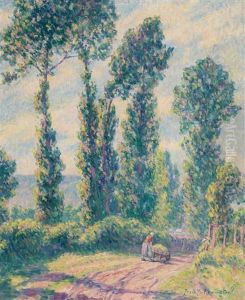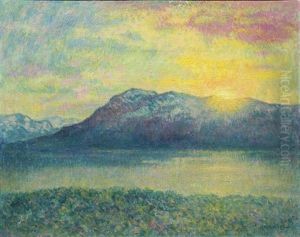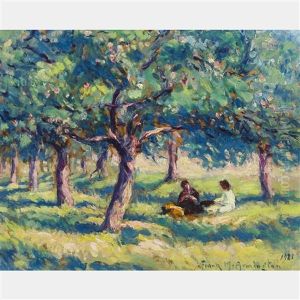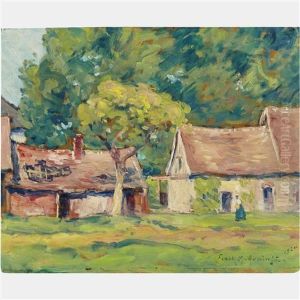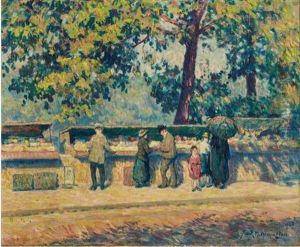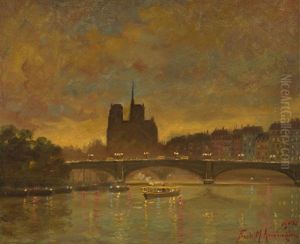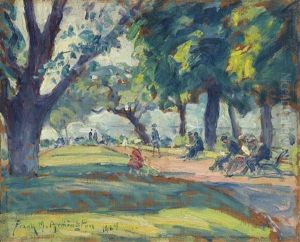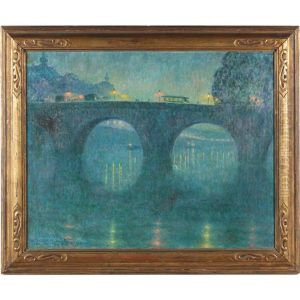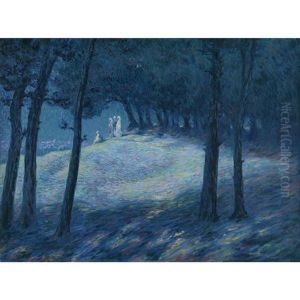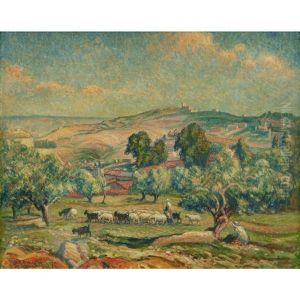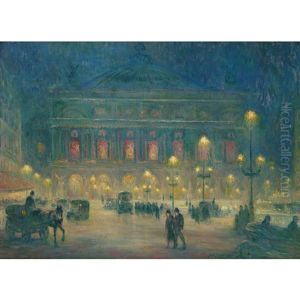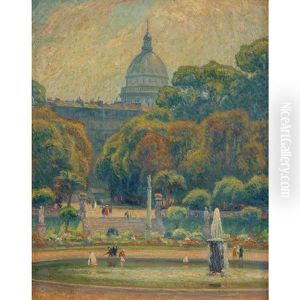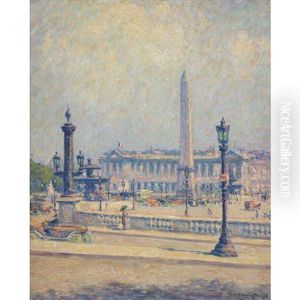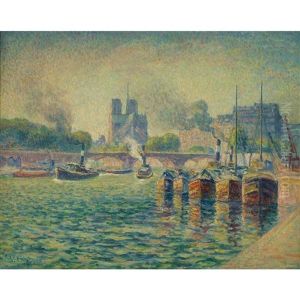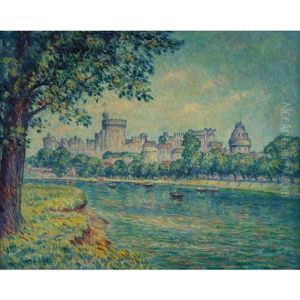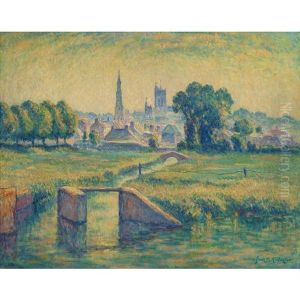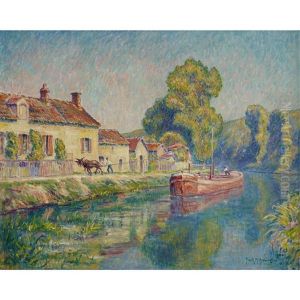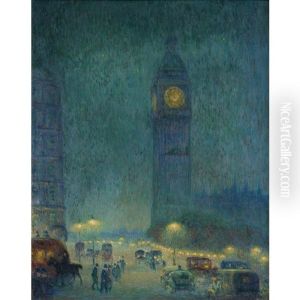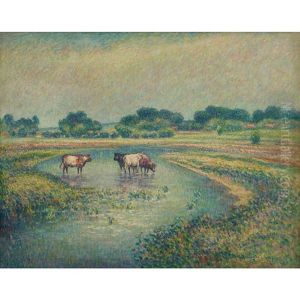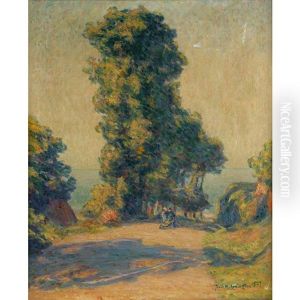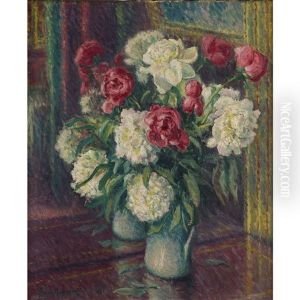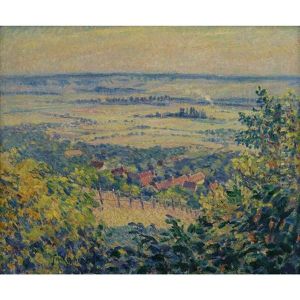Frank Milton Armington Paintings
Frank Milton Armington was a Canadian artist known for his etchings, paintings, and watercolors. Born on July 28, 1876, in Fordwich, Ontario, Canada, Armington grew up in a supportive environment that fostered his artistic talents. He began his formal art education at the Ontario School of Art in Toronto and later continued his studies in New York at the Art Students League. His early work was influenced by the picturesque landscapes of his Canadian homeland, and he developed a keen interest in capturing the changing effects of light and atmosphere on the natural world.
Armington moved to Paris in 1900 with his wife Caroline Helena Wilkinson, who was also an artist. Paris, being the hub of artistic activity at the time, offered Armington the opportunity to immerse himself in the rich cultural milieu of the early 20th century. He enrolled at the Académie Julian and the Académie Colarossi, well-known private art schools that attracted international students. During this period, he was exposed to the works of French Impressionists, which had a lasting impact on his style. Armington traveled extensively throughout Europe, drawing inspiration from the various landscapes and city scenes he encountered.
His etchings and prints gained significant popularity, and Armington became known for his skillful depiction of Parisian streets, historical landmarks, and bucolic French countryside scenes. He exhibited his work at the Paris Salon and other prominent European exhibitions. During World War I, Armington served with the Canadian forces, and his experiences during the war influenced some of his later work. After the war, he returned to Paris and continued to produce and exhibit his art.
In 1939, with the onset of World War II, Frank and Caroline Armington left Paris and returned to North America. They settled in New York City, where Frank continued to work until his death on September 9, 1941. Throughout his career, Armington remained dedicated to his craft, and his body of work was well-received by critics and collectors alike. His etchings and paintings can be found in private collections and museums around the world, including the National Gallery of Canada, which holds a substantial collection of his prints.
